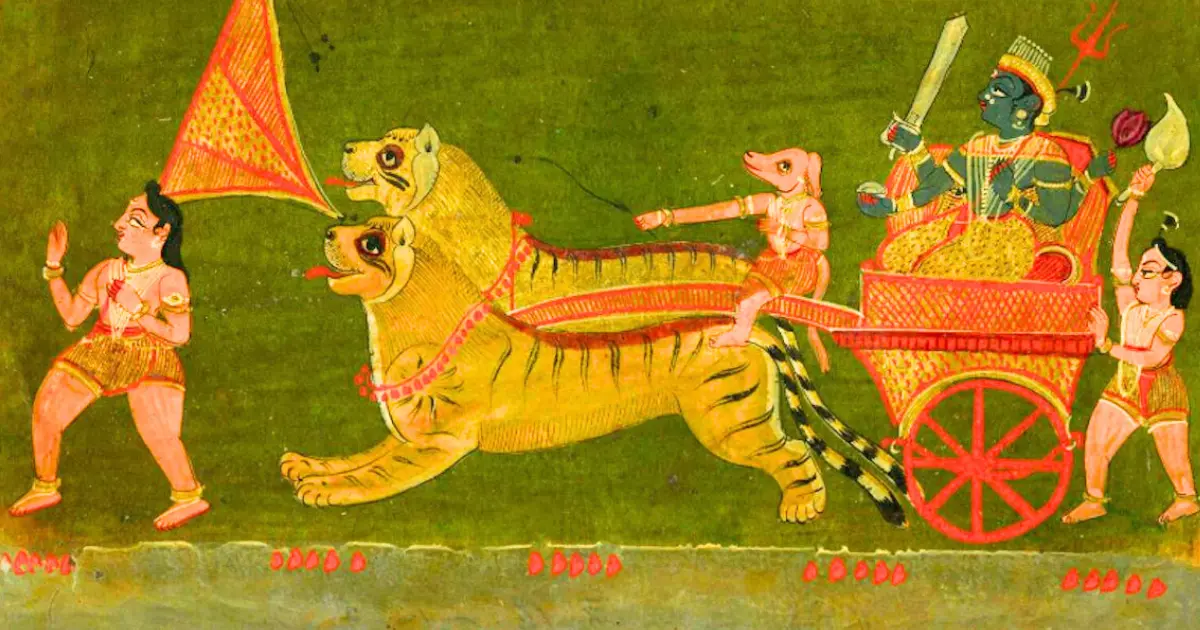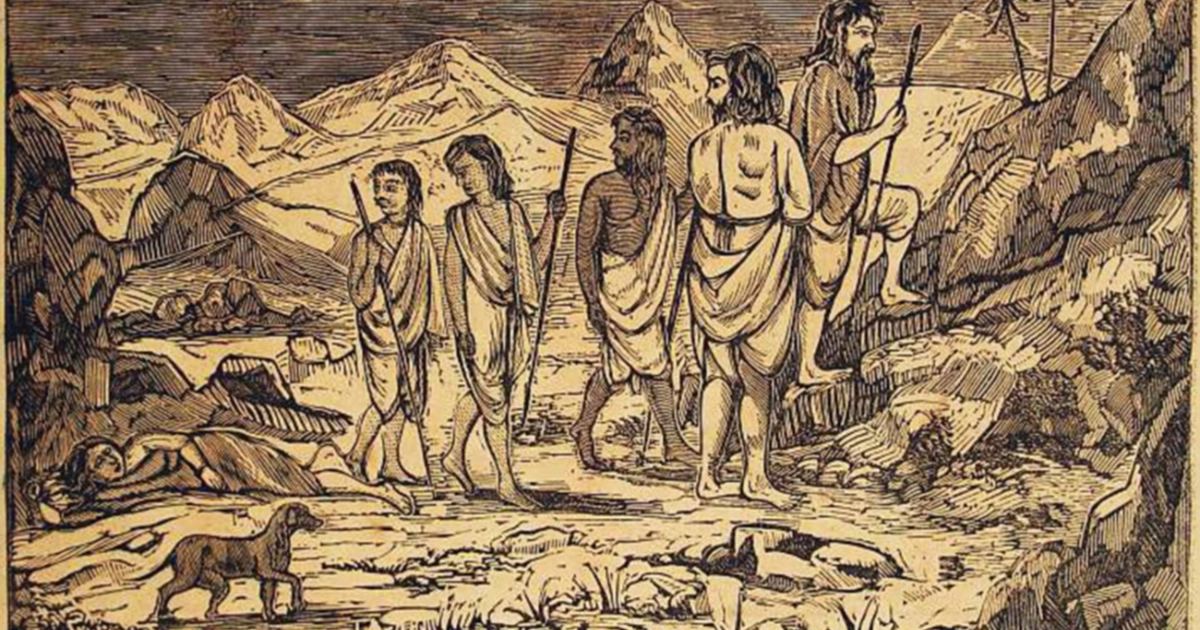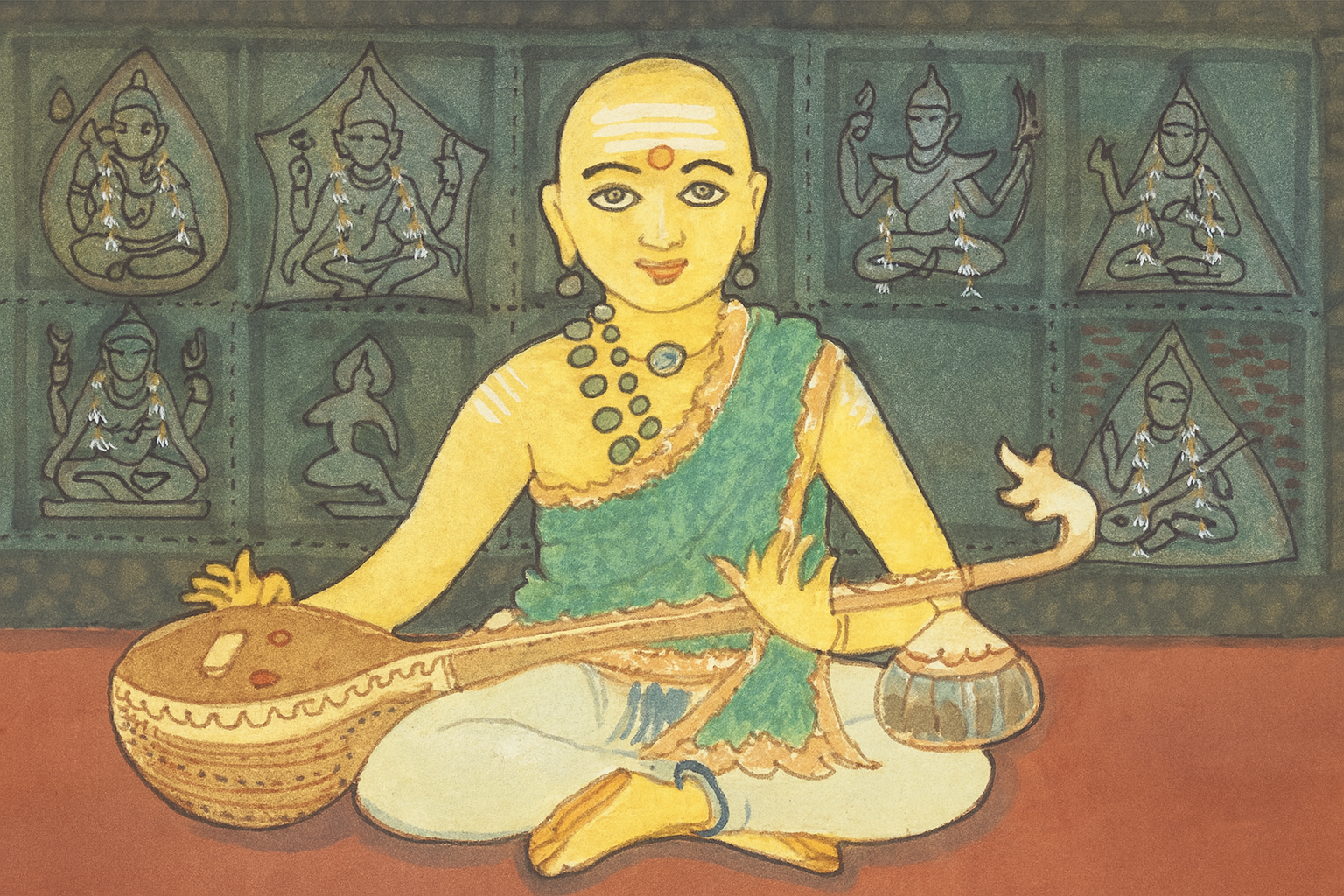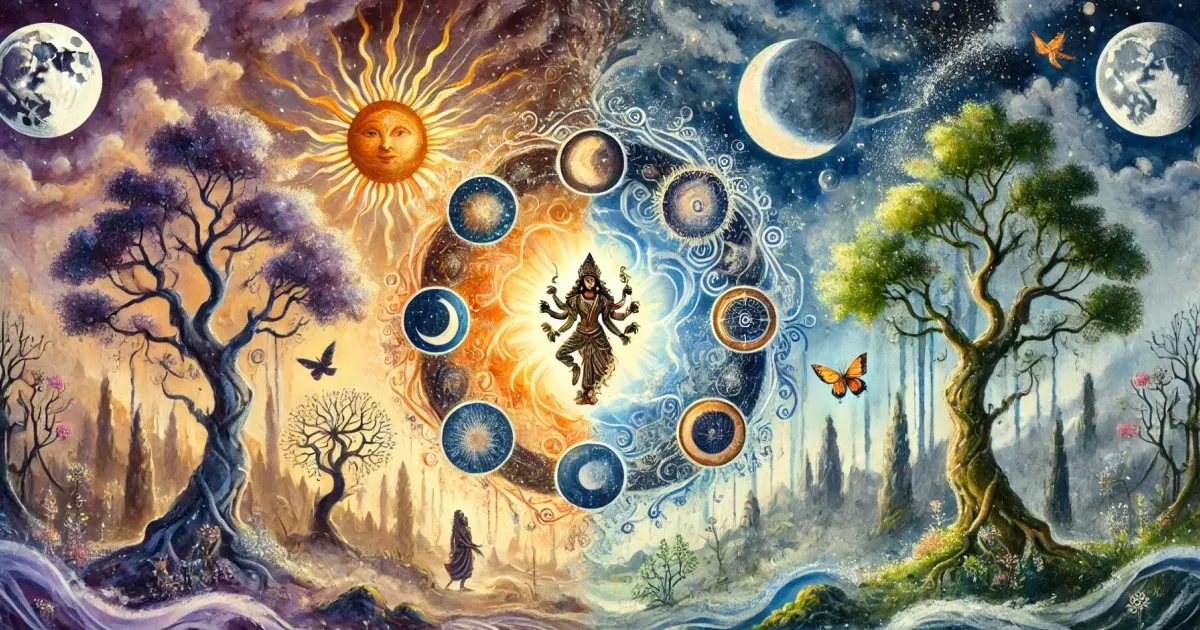मायां तु प्रकृतिं विद्यान्मायिनं च महेश्वरम् । तस्यावयवभूतैस्तु व्याप्तं सर्वमिदं जगत् ॥
māyāṃ tu prakṛtiṃ vidyānmāyinaṃ ca maheśvaram tasyāvayavabhūtaistu vyāptaṃ sarvamidaṃ jagat
Know, then, that prakṛti is māyā and that Great God is the Lord of māyā. The whole universe is filled with objects which are parts of its being. (māyā is the Energy (prakṛti), while God is the Energetic) ŚVETĀŚVATARA UPANIṢAD 4.10
दैवी ह्येषा गुणमयी मम माया दुरत्यया । मामेव ये प्रपद्यन्ते मायामेतां तरन्ति ते ॥
daivī hyeṣhā guṇa-mayī mama māyā duratyayā mām eva ye prapadyante māyām etāṃ taranti te
My divine energy māyā, consisting of the three modes of nature, is very difficult to overcome. But those who surrender unto Me/brahman/Self cross over it easily. BHAGAVAD GĪTĀ 7.14
Feminism, in its western universalistic sense, has long been a colonial and imperial project. It has, historically, undermined indigenous knowledge, and the way various communities conceptualized themselves, and their relationships with other entities. The imposition of Western frameworks, often as a civilizing act, resulted in the disintegration of traditional meanings and identities, resulting in a complete break with their past.
As women were the bearers of culture and ways of life, this had the greatest impact on them. The tools that were readily available to them before, which helped them self-define themselves in relation to others, gradually disappeared under the onslaught of industrialization and modernity. Various religious, legal, and educational interventions ensured that the indigenous worldviews, which traditionally saw nature as an integral part of their being and women as its expression, were completely obliterated. Linda Tuhiwai Smith (1999), locates this willful destruction in the acts of colonialists to-
Desire, extract, and claim ownership of indigenous ways of knowing, their imagery, the things they created and produced,” and yet, “rejecting the people who created and developed those ideas and seeking to deny them the right to be creators of their own cultures and own nations. LINDA TUHIWAI SMITH (1999)
This epistemic injustice can be seen in the case of eco-feminism, which was long ignored despite its effectiveness in reimagining human-nature relationships, and its roots in ancient Hindu philosophy, many indigenous eastern/African and South American cultures, were actively denied. Whether it is the Chipko movement in Uttarakhand or the Bishnoi community in Rajasthan known for their environmental awareness (Shiva, 1989), they all draw their conceptual resources from ancient Indian thinking where nature (sṛṣṭi) is not seen as separate from vyakti (person), the śakti temples in various parts of India didn’t just have their spiritual value but also protected the environment in areas around these śakti-pīṭhas, as people believed that violating the environment around these areas would be a violation of Śakti (Devi) herself (James, 2000). Additionally, even in Indian households, it is the women who act as the protectors of the environment. Within Hindu philosophy, nature/environment has always remained a feminist issue.
In the Upanishadic view, there is only One reality. From that pāramārthika absolute standpoint there is no ‘other’, no world to worry about. But from the vyāvahārika empirical standpoint, that One which is genderless, actually beyond all genders, manifests itself as many, with the ‘assistance’ of māyā śakti. Here, the kinetic facet of the total potential is feminine. We see the female aspect being given its rightful place and exemplified in Hindu philosophy, religion, and culture, at all stages in a Hindu’s life. When we dig deeper into Hindu philosophy; nature in all its glory is prakṛti, female power (Kinsley, 1986). This world, in fact, which is māyā, is also feminine, both in the gender of the word as well as in the symbolism of it. Whatever has name and form in fact- be it male even, is female ultimately, in the view of the śāstras, the sacred texts of the Hindus. In other words, this is feminine ecology.
Dhārmika Environmentalism, thus, is a natural consequence of looking at the planet, the world, and all nature as the divine mother. For Hindus, the necessity of ‘feminism’ at a worldly level is more than satiated by worshipping the goddess, by seeing the goddess in everything, and at the religio-spiritual level, it is moot, as the ultimate reality is not a male sitting in heaven. India is a place where the goddess, the female, the feminine aspect of life continues to be worshipped in an unbroken tradition across the land (Kenoyer, 1983).
Mātā Sītā, for example, from the Rāmāyaṇa embodies prakṛti. She was born from the earth, and is described as the daughter of the earth, bhūmi. Sītā’s father Raja Janaka found her while ploughing his fields. This “brings to mind the spontaneous sprouting of plant life from the earth in its most natural form, as in the wild,” as per Prof. Lavanya Vemsani at Shawnee State University (History and Religion) “and thus the birth of Sītā indicates… her closeness to spontaneous life and her affinity to nature, prakṛti.” The root √si is given in Pāṇini’s Dhātupāṭha as evocative of bandhana, or binding/fastening and yields words such as sita, of which Sītā is the elongation and personification, and secana, meaning sprinkling, effusion. Just as the plough’s furrows bind, fasten, or bring the effusion of crop- so does prakṛti for us. It binds us to reality, fastens us to the rhythm of ṛta, ushers an effusion of creation. The association of Sītā and prakṛti begins at the level of the root word itself.
Even in Bengal and Kerala, communist strongholds for long, we find the worship of the divine power of Durgā/ Kāli and Bhagavatī respectively in a tāntrika form. This sādhanā sees itself play out ritualistically among lay people; both men and women, during the nine days of Durgā Pūjā in the eastern part of the country, as an offering of dance via Garbā and Dānḍiyā to the Goddess in the western regions, and in the chantings of Lalita Sahasranāma and Soundarya Lahirī in the southern states, all during the sacred nine days of Autumn (śarannavarātri) and Spring (vasantanavarātri). Twice a year we have here a celebration which brings about transnational, transregional, transgender, and transgenerational alliances and coalitions, leading to street festivals and public participation by communities, irrespective of their backgrounds or political affiliations, all in praise of śakti, the divine feminine. The female is worshipped everyday in Hindu households and has not been reduced to history (David, 2009) nor is she dying a suffocating death in museums (Pintchman, 1994).
Devi, the goddess in Hindu understanding, is not important just because she birthed a male god, but she is worship worthy in her own right too, and there is a whole sect of worshippers devoted to Devi worship only. Her worship is on par with that of the worshippers of ‘male’ Śiva or Viṣṇu. In fact, in the Devi Bhāgavatam, which is a tale of her glory, her conquests, and her battle against evil, she is glorified over and above all the male gods. India can rightfully boast of such an exemplary culture with elaborate ritualized customs that reveres the female, for being just that, female. For example, the Kāmākhya temple in Assam, India and the Chengannur temple in Kerala honour the menstruating goddesses via yearly festivals (Sridhar, 2019).
That an ancient civilization surviving to this date over millenia continues the worship of the feminine should be cause celebre for the feminism movement in the west, instead we have the modern day feminists focus only on the faultlines or social ills magnified out of proportion by colonial and missionary accounts erazing any mention of this beauteous tradition which clearly influences a billion Hindus to this day.
Cases of eco-feminism are also found in various parts of North East India amongst the tribals, who have naturally exchanged ideas and beliefs with their mainland counterparts. Iyatta M. Uprety has discussed the role of women in the preservation of nature in the Sikkim Himalayas and North East India. She has worked on the observations, perceptions, and experiences of women in conserving nature and their ways to adapt to the induced effects of climate change. The author has mentioned that destruction of nature and marginalization of women have gone side by side in the regions under study. She has considered b. Thus, the author has interpreted decline of nature and biodiversity as victims in the clashes between marginalization of women and dominance of patriarchy (Uprety, 2016).
For example, since early times, Khasi women have played an important role in preserving and managing nature in Meghalaya. It is believed that in the Mawphlang sacred forest in the East Khasi Hills district of Meghalaya, a local female deity, Labasa, protects the flora and fauna from external perils. Legends connected with the forest also mention that the forest was initially ruled by the Blah clan, who were looking for a person to protect the forest. Later, they found a woman with a son. The woman promised to allow her son to use it for the purpose on the condition that she would plant five saplings, which, if grown into trees, would be taken over by her son. The Khasi community believes that the deity named ‘Labasa’ would be annoyed if any natural elements were harmed within the forest. Such instances certainly indicate Khasi women’s close association with nature (Dutta, 1982).
Deities and goddesses are often connected with nature and worshipped. The river Kopili was revered with an annual sacrifice in the Jaintia hills located in the eastern part of Meghalaya. Another water goddess named Lenju was also propitiated with offerings. With the propagation of Christianity under the patronage of the British government, such indigenous beliefs associated with nature have started to diminish. As a result, the number of sacred groves in Meghalaya is also gradually declining (Dutta, 1982).
Just as Hindus do bhūmi pūjā when digging the earth for construction, just as they make offerings of flowers, fruits, and incantations to dharti mātā (Mother Earth) to seek her forgiveness each time they hurt her, so do many other traditions around the globe. Indigenous peoples the world over look upon the Earth as a goddess and treat her with the respect she deserves. Which would mean not plundering her resources unnecessarily and taking care of her wealth and bounty as a guardian would and not violating her as a religious sanction or a god-given right.
For example, Pachamama which in Quechua means Mother Earth or Mother Cosmos, is also Gaia, presiding over planting and harvesting, embodying mountains, and causing earthquakes when disrespected. She forms an important aspect of worship in Peru even today. Andean people believe in not taking too much from her for fear of angering her or upsetting her. A similar sentiment can be found on the African continent, where women have long considered the environment sacred and thus protected it. “African women in general need to know that it is okay for them to be the way they are—to see the way they are as a strength, and to be liberated from fear and silence,” Wangari Matthai concludes, citing African women’s steadfastness in weaving their lives around the environment and family.
Even the mighty Incas made regular offerings of pago a la tierra, a payment to the earth, to her. As do the ceremonies of today, which offer traditional items such as coca leaves, huayruro seeds, and chicha to Pachamama (Hastorf, 2007). This knowledge system is kept alive via the embodying and storytelling of the women in the family. Most storytellers are grandmothers. A female artform that has taken a beating due to the atomized nature of our living which is the direct result of a market driven post-industrialized economy. And violence against women too takes various forms.
The Mother Earth Law, which is a Bolivian legislation dedicated to sustainable development, respects the balance of human life and the natural environment. It prioritizes the rights and knowledge of the country’s majority indigenous population, and its stated objective is integral development in harmony and balance with Mother Earth to Live Well. “Environmental Violence” against Women is a term developed by the women of RENAMAT (National Network of Women Defending Mother Earth) which means:
All action or omission caused by people that, by damaging the environment, prevents or restricts the exercise of women’s rights and, in turn, harms their quality of life, integrity, health, economy, work, heritage, and cultural identity. ENVIRONMENTAL VIOLENCE
“In the Judeo-Christian paradigm, nature is pitted against culture in an eternal struggle.” In Bhāratavarṣa, as in many other indigenous cultures, culture goes in harmony with nature and even improves on it, not by destroying it, but by observing its physical rules while spiritually transcending them. This paradigm of culture can be called the Nature-Culture Continuum Paradigm…“all modern problems exist because, currently, the Nature-Culture Conflict Paradigm reigns supreme, and is trying to completely obliterate cultures and societies and institutions which espouse and propagate the Nature-Culture Continuum Paradigm” in the words of Pankaj Saxena, Director, Culture Research, Bṛhat.
Peace, harmony, and a healthy planet are very much possible when living traditions such as those in India, Kenya, Peru, and Bolivia, among others, are given a chance to flourish and prioritized over universal globalizing forces. This would naturally empower women and nature in their wake. This is how Eco Feminism is celebrated and duly acknowledged via honouring indigenous festivals, their cultures, customs, and pilgrimages, all of which are related to nature and the environment.
Endnotes:
- Ann R. David, Gendering the Divine: New Forms of Feminine Hindu Worship, International Journal of Hindu Studies (2009)
- David R. Kinsley, Hindu Goddesses: Visions of the Divine Feminine in the Hindu Religious Tradition, University of California Press (1986) 3. Hastorf, C. A. (2007). Archaeological Andean rituals: Performance, liturgy, and meaning. The archaeology of ritual.
- 77-107.
- Iyatta Maharana Uprety, Eco-Feminism and Environmental Conservation: A Geo-Historical Perspective from North Eastern India, Conference Paper (2016)
- J.M.Kenoyer, J.D.Clark, J.N.Pal & G.R.Sharma, An Upper Palaeolithic Shrine in India? (1983)
- Linda Tuhiwai Smith, Decolonizing Methodologies: Research and Indigenous Peoples, Zed Books (2012)
- Miranda Fricker, Epistemic Injustice: Power and the Ethics of Knowing, Oxford University Press (2007)
- Nithin Sridhar, The Sabarimala Confusion – Menstruation Across Cultures: A Historical Perspective, Vitasta Publishing (2019)
- Promatha Nath Dutta, Impact of the West on the Khasis and Jaintias, New Delhi: Cosmo Publications: New Delhi, 1982
- Tracy Pintchman, The Rise of the Goddess in the Hindu Tradition, Sunny Press (1994) 11. Vandana Shiva, Staying Alive: Women Ecology and Development, Zed Books (1989)
- Vandana Shiva, Ecology and the Politics of Survival: Conflicts over Natural Resources in India, Sage Publication (1991)








